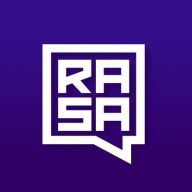

Google Dialogflow and Rasa compete in the conversational AI space. Dialogflow holds an advantage in integration, while Rasa offers superior customization options.
Features: Dialogflow is recognized for its robust natural language understanding and the simplicity which makes it quick to set up. It includes pre-built integrations facilitating a seamless user experience. Rasa provides extensive customization features, allowing businesses to create tailored solutions. It supports diverse data sources and offers flexibility to meet specific business requirements.
Ease of Deployment and Customer Service: Dialogflow benefits from Google's comprehensive support and its cloud-hosted model simplifies deployment and maintenance. Rasa, requiring more technical expertise, offers on-premise deployment, giving businesses greater control over data privacy and security. Customer service differs as Dialogflow provides structured support, while Rasa focuses on community-driven assistance.
Pricing and ROI: Dialogflow employs a pay-as-you-go pricing model, offering flexibility for scaling and minimizing initial expenses. Rasa's open-source model may cut setup costs, but additional enterprise features could lead to higher expenses. Both platforms promise significant ROI. Dialogflow's cost structure might attract businesses looking for lower upfront investment.
A Dialogflow agent is a virtual agent that handles conversations with your end-users. It is a natural language understanding module that understands the nuances of human language. Dialogflow translates end-user text or audio during a conversation to structured data that your apps and services can understand.
At Rasa, we're building the standard infrastructure for conversational AI. With over half a million downloads since launch, our open source tools are loved by developers worldwide, and Rasa runs in production everywhere from startups to Fortune 500s. Our friendly community is growing fast, with developers from all over the world learning from each other and working together to make text- and voice-based AI assistants better.
Rasa's machine learning-based dialogue tools allow developers to automate contextual conversations. What are contextual conversations? Real back-and-forth dialogue that is handled seamlessly. Taking AI assistants beyond fixed question / answer pairs creates exciting new use cases for people and business. The tip of the iceberg include automation of sales & marketing, internal processes, and advanced customer service that integrates into existing backend systems. With Rasa, companies control their own destiny, investing in AI that they own and ship instead of relying on third parties.
We monitor all Chatbot Development Platforms reviews to prevent fraudulent reviews and keep review quality high. We do not post reviews by company employees or direct competitors. We validate each review for authenticity via cross-reference with LinkedIn, and personal follow-up with the reviewer when necessary.